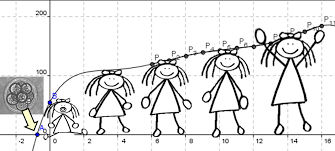Companies that spend time and effort in understanding mindsets of their executives are more like to transform their organization than the organizations that do not. The transformation is akin to that of a caterpillar growing into a butterfly. Employees who become aware of possibilities fail to go back to the earlier state “of not taking a broader perspective”. This metamorphosis can be attained only if companies invest in ascertaining limiting mindsets of their employees and then invest in reframing of the mindsets. To demonstrate how assumptions can be reframed, below are three interventions that changed with existing mindsets. The reframed assumptions that would have led to successful change are also mentioned.
|
Business Innovation |
Existing Mindset of employees |
Reframed assumptions for employees for successful change |
|
Bank learning from its high performers rolled out an intervention for other sales agents. It provided questions for profiling customers with support scripts. But this led to no change in performance |
· My job is to give customers what they want · I should follow the Golden rule and treat customers the way, I would like to be treated |
My job is to · Make customers fully understand their needs · Treat the people the way they ( people and not bankers ) want to be treated |
|
Telecom company rolled out simplified appraisal performance process with simple ratings but managers would still not give feedback. |
Managers believed – Criticisms damage relationships
|
Had managers reframed their assumptions to · Honesty combined with respect does not damage relationships · Honesty combined with respect are essential to build strong and lasting relationships |
|
Manufacturer spent millions in knowledge management system to encourage collaboration and discourage hoarding of information by his employees |
Belief of managers · Information is power · Good leaders are powerful leaders. |
Sharing information is the best way to magnify power |
The metamorphosis will not work if the culture of the organization or the work environment remains the same. Gary Hamel’s and C K Prahlad’s management fable of 4 monkeys demonstrates how new hires develop the mind frames of the existing group. Hence it is essential that change interventions be broad based. In larger organizations, it can be achieved by forming smaller groups of 25-30 persons.
One of the easiest ways of ensuring change is if people take it personally. In many behaviour related problems, we (humans) consistently overestimate how much we are part of solution instead of the problem. So, when posed the question if they “role model the behaviour changes”, 86 percent of leaders reported they do while only 53 percent of their subordinates report positively.
The key learnings to achieve organizational transformation are
- Engage with employees to understand their mindsets and reframe them
- Change has to be a large-scale intervention as if it is limited to few employees, they will revert to older behaviour
- Be the change you want. Internalise the behaviour change before expecting others to change.
Acknowledgement : Abridged version of article from Mckinsey Insights. Authored by Scott Keller and Bill Schaninger

